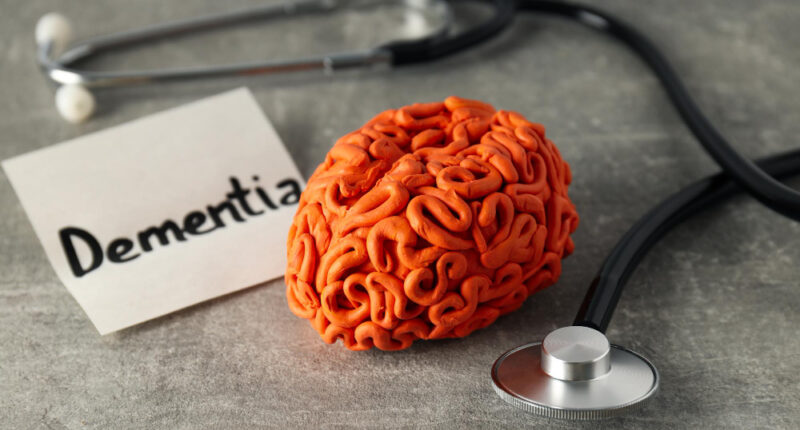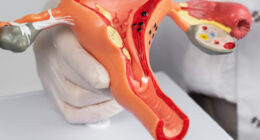Vascular dementia, a prevalent form of dementia, occurs when the brain experiences diminished blood flow. It is the second most common form of dementia after Alzheimer’s disease and can significantly impact a person’s cognitive abilities and daily life. It’s important to grasp the symptoms, causes, and treatment options to detect and manage it early.
What is Vascular Dementia?
Vascular dementia is a type of dementia that occurs when blood flow to the brain decreases, depriving brain cells of essential oxygen and nutrients. This reduction in blood flow can be caused by blocked or narrowed blood vessels, leading to brain damage and cognitive decline. Damage or death of brain cells can result in cognitive impairment. The severity and progression of symptoms can vary depending on the extent and location of the brain damage.
Symptoms of Vascular Dementia
The symptoms of vascular dementia can appear suddenly or gradually and may vary depending on the brain areas affected. Common symptoms include:
- Memory Loss: Having trouble recalling recent events or information.
- Confusion: Disorientation in familiar environments or difficulty understanding time and place.
- Trouble with Concentration and Planning: Difficulty focusing on tasks or making decisions.
- Mood Changes: Depression, anxiety, or mood swings.
- Difficulty with Communication: Problems finding the right words or following conversations.
- Impaired Movement: Difficulty walking, balance problems, or frequent falls.
- Personality Changes: Alterations in behaviour or personality traits.
- Problems with Daily Activities: Difficulty managing daily tasks like cooking, cleaning, or managing finances.

Causes of Vascular Dementia
Vascular dementia is primarily caused by conditions that damage blood vessels or restrict blood flow to the brain. Common causes include:
- Stroke: A stroke can block a blood vessel in the brain, leading to cell damage or death. Over time, a series of mini-strokes can lead to the development of vascular dementia as they cumulatively cause damage to the brain.
- Chronic High Blood Pressure: Hypertension can damage blood vessels and increase the risk of vascular dementia.
- Diabetes: Poorly controlled diabetes can damage blood vessels, affecting blood flow to the brain.
- Atherosclerosis: The buildup of fatty deposits in blood vessels can narrow or block arteries, reducing blood flow.
- Heart Disease: Conditions like atrial fibrillation or heart attacks can affect blood flow to the brain.
Risk Factors
Several factors can increase the risk of developing vascular dementia, including:
- Age: The risk increases with age, particularly after age 65.
- History of Heart Disease: Heart conditions can impact blood flow to the brain.
- Smoking: Smoking not only harms your lungs, but it also damages your blood vessels and raises your risk of having a stroke.
- High Cholesterol: Elevated cholesterol levels can increase the risk of developing atherosclerosis.
- Obesity: Excess weight increases the risk of diabetes, high blood pressure, and heart disease.
- Family History: A family history of dementia or cardiovascular disease can increase risk.
Diagnosis
Diagnosing vascular dementia requires a thorough assessment, including:
- Medical History: Exploring Your Personal and Family Health Story.
- Physical Examination: Checking for signs of stroke, heart disease, or other related conditions.
- Cognitive Tests: Exploring memory, critical thinking, and problem-solving abilities.
- Brain Imaging: MRI or CT scans to detect changes in blood flow, strokes, or other brain abnormalities.
- Laboratory Tests: Blood tests to check for underlying conditions like diabetes or high cholesterol.
Treatment and Management
While there is no cure for vascular dementia, managing underlying conditions and adopting a healthy lifestyle can help slow its progression and improve quality of life. Treatment options include:
- Medications: Drugs to control high blood pressure, cholesterol, and diabetes.
- Lifestyle Changes: Regular exercise, a balanced diet, quitting smoking, and limiting alcohol.
- Cognitive Therapy: Activities and exercises to improve cognitive function and maintain mental skills.
- Supportive Care: Physical therapy, occupational therapy, and support groups to help manage symptoms and maintain independence.
- Regular Monitoring: Ongoing medical check-ups to monitor and manage health conditions.
Conclusion
Vascular dementia is a serious condition that can significantly impact cognitive abilities and daily life. Early diagnosis and management of risk factors are essential for slowing its progression and maintaining quality of life. Understanding the symptoms, causes, and treatment options can help individuals and their families navigate this challenging condition more effectively. If you or a loved one is experiencing symptoms of vascular dementia, seek medical advice promptly for proper evaluation and care.









